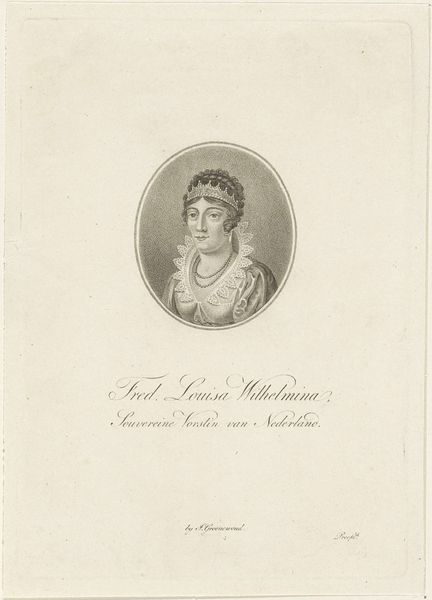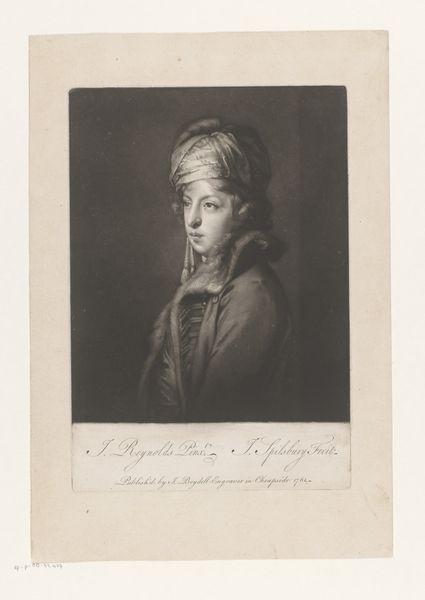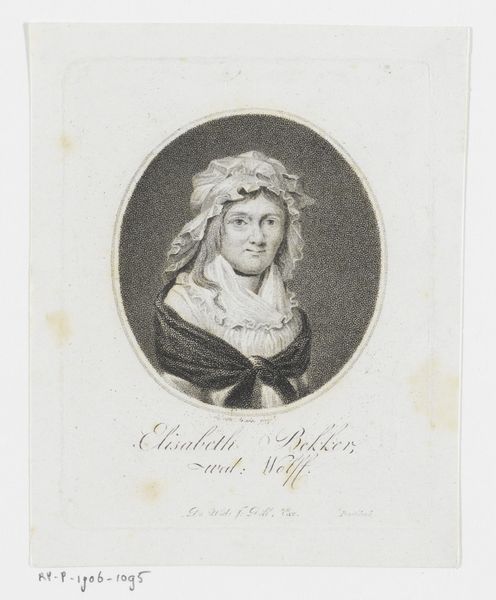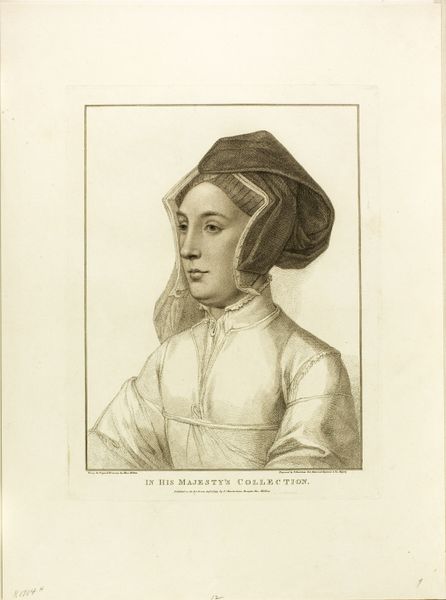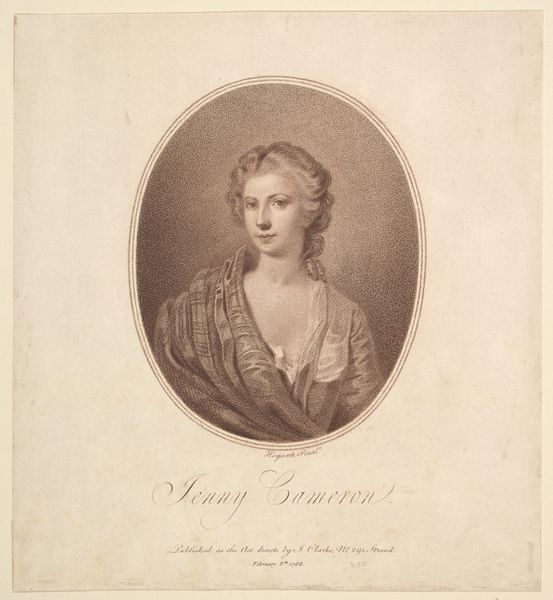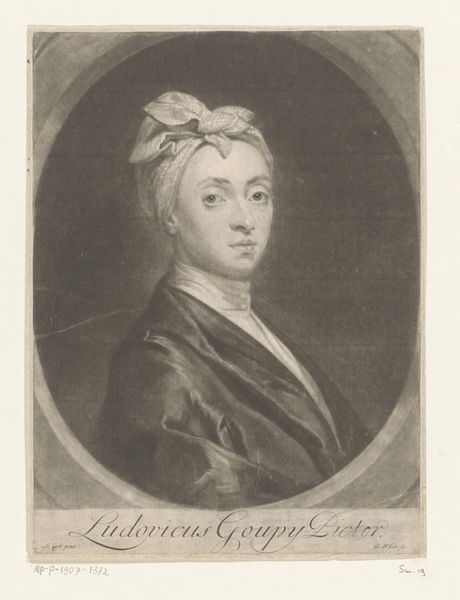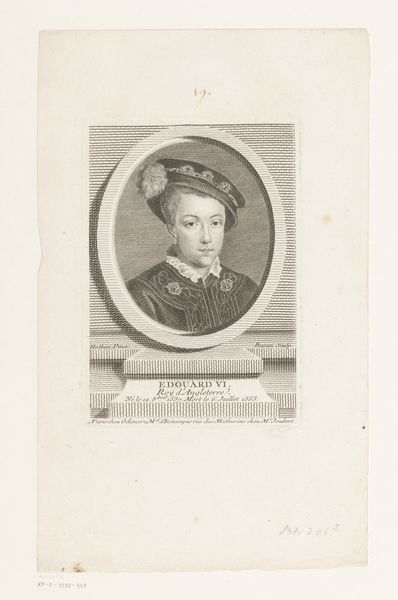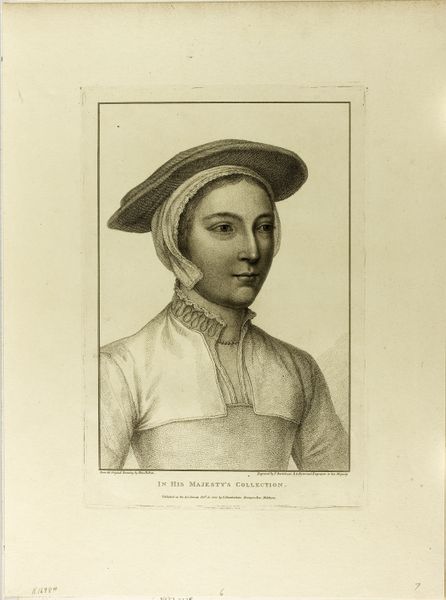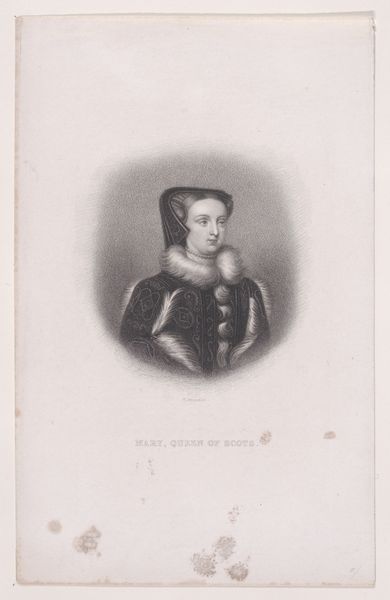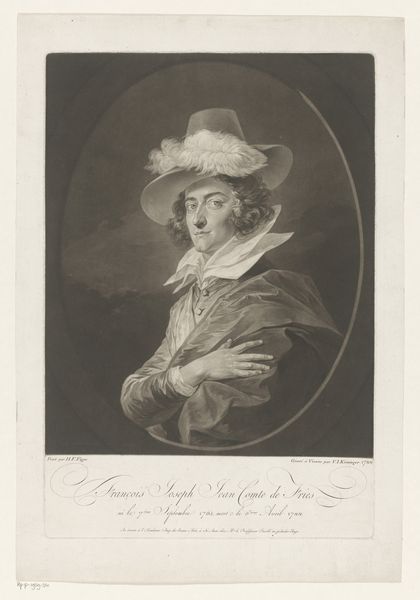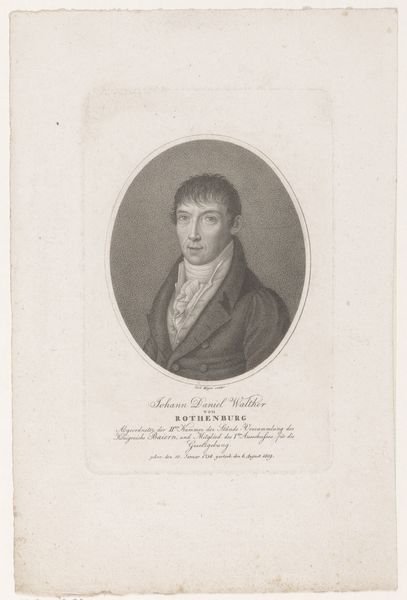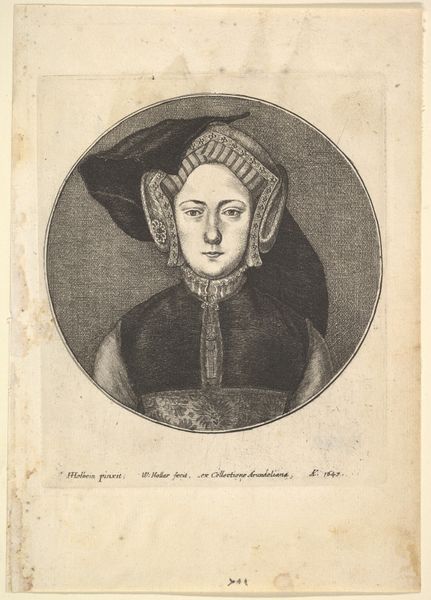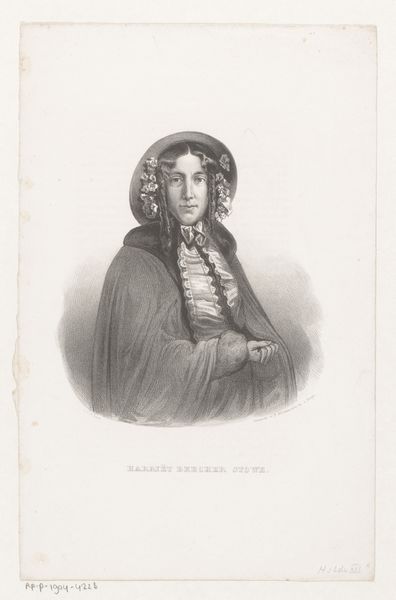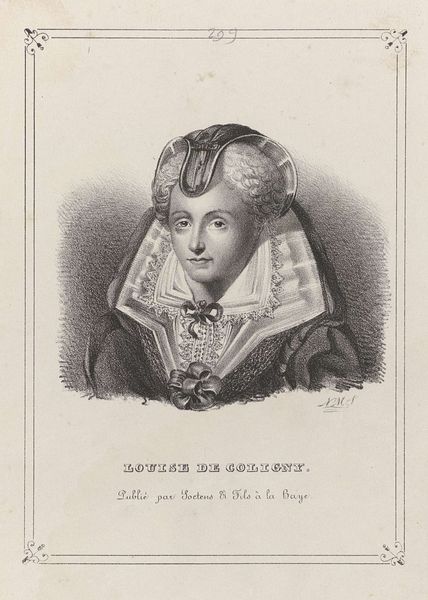
engraving
#
portrait
#
neoclacissism
#
old engraving style
#
classical-realism
#
line
#
history-painting
#
engraving
Dimensions: height 427 mm, width 292 mm
Copyright: Rijks Museum: Open Domain
Curator: The first thing that strikes me is the calmness, that hushed quality. It’s delicate and precise. There is such tenderness to this portrait. Editor: Indeed. This is an engraving by Nicolas Henri Jacob, created between 1825 and 1827, and what you’re sensing speaks directly to its Neoclassical style and commitment to clear, clean lines. It is called "Portret van Margaretha van Valois" and depicts Margaret of Valois. What draws your eye? Curator: Definitely the ruff around her neck. All those tight little pleats... it’s such a constricting, almost tortured halo around her. There is an aura about this engraving of stillness. I want to look away, but I am compelled not to, that fur collar is interesting with its speckled ermine tails, is it a status symbol of importance or influence, do you know anything about this particular image? Editor: The ermine certainly emphasizes her status as royalty. Margaret of Valois was a controversial figure, the sister of King Charles IX of France. She navigated the tumultuous political landscape of 16th-century France, including the St. Bartholomew's Day Massacre, during which Huguenots were persecuted and slaughtered. Jacob's choice of the Neoclassical style, so concerned with order and reason, might be his attempt to reimpose some semblance of harmony upon a history marked by strife. The image, while appearing tranquil on the surface, could be seen as a poignant effort to reimagine a queen against her tormented history. Curator: I am taken with that interpretation, thank you! It helps me see how images hold so much in their creation, a true insight to the artist who can use such a historic interpretation with the techniques to allow that reading! Editor: The symbolic importance of a portrait resides not only in capturing the sitter's likeness but in embodying a network of social, cultural, and historical meanings, that continue to be seen for generations. Curator: It leaves you considering her existence. The very human life behind a carefully constructed facade. That is what speaks to me from this particular historical reflection, so glad to see its still available at the Rijksmuseum. Editor: The emotional pull of this historical rendering seems to rest in that subtle interplay of constraint and regal pose. It really resonates through time.
Comments
No comments
Be the first to comment and join the conversation on the ultimate creative platform.
